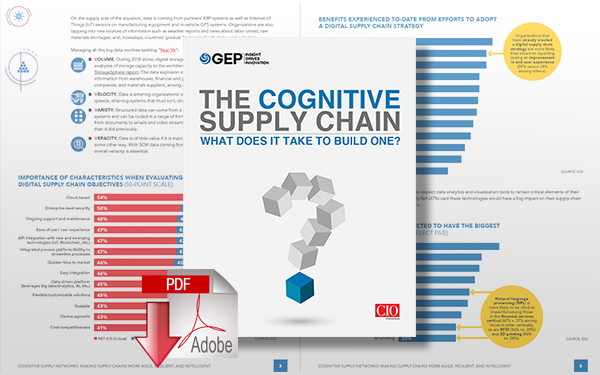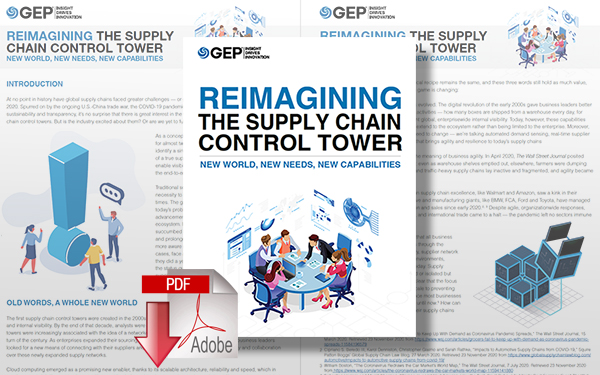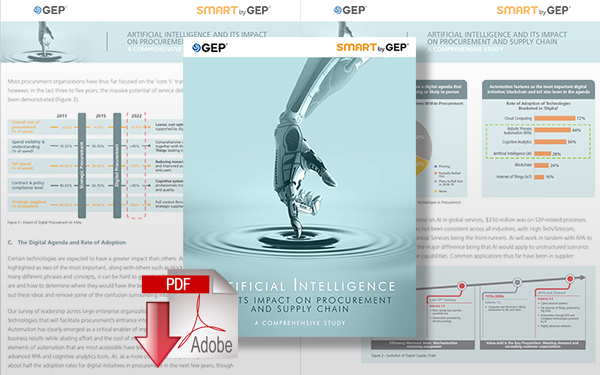3 Ways Artificial Intelligence/AI Can Help With Supply Chain Digital Transformation

Making supply chain software smarter with AI has many benefits; lowering costs and risks, provides more operational efficiency, and truly optimizes inventory and warehouse management for any real-world scenario.
Big Data Analytics, Enhanced with AI and Machine Learning
Via the cloud, data from across the supply chain and from customer purchases can be stored in data lakes, mined, and analyzed to understand historical trends and predict future demand.
Many organizations are already exploiting this capability.
The Cognitive Supply Chain Survey
When asked what benefits were accruing from their adoption of a technologically advanced supply chain strategy, 52% of the IDG survey respondents cited the “ability to integrate data and leverage analytics to improve the planning process.”
In fact, that benefit was their top choice from a list of a dozen benefits.
Benefits of Using AI in Supply Chains?
- Embed artificial intelligence (AI) and machine learning (ML) tools and the way an organization’s supply chain performs changes completely.
- From being inelastic, the supply chain becomes responsive.
- Instead of making predictions by analyzing past patterns, it acts basis real-time data.
- The supply chain leaves behind unoptimized cost management methods and moves to dynamic should-cost models.
- And its lack of inventory control gives way to end-to-end visibility into inventory demand and supply, reducing wastage, minimizing business risk and increasing working capital.
AI-Led Supply Chain Transformation Takes Place in 3 Ways:
1. Accurate Forecasting with Demand Sensing
It’s common for organizations to underestimate as well as overestimate demand. This is because forecasting methods in traditional supply chain management software rely on historical sales data to guess future demand. This approach reduces prediction accuracy since past patterns never really match what’s happening right now.
The methods do not measure the effect of external factors that either impacted demand in the past and can do so in the future. For example, past data could not have predicted the demand disruption brought about by the pandemic.
AI-powered supply chain management software leaves the past behind, by unifying internal and external data pouring in from all sides into a data lake. From here, the real-time data is quickly accessed to optimize operations.
By integrating warehouse management system with other supply chain systems, organizations collect real-time data, pick vendors and suppliers that support demand planning and replenish materials faster.
In fact, the amount of data the supply chain software analyzes can be expanded exponentially for better and better demand sensing.
Also, no more just macro-level forecasts. Supply chain managers can model demand at the granular level and detect and resolve issues they never knew existed.
The result?
- More revenue
- Lower costs
- Shorter lead times
- Better inventory management and improved working capital
2. Savings with Dynamic Should-Cost Models
When sourcing, it’s vital for supply chain managers to understand how a small change in the cost structure can have a cascading effect on the final prices of the product or service.
Hence, accuracy is crucial in estimating expected prices based on cost drivers such as raw materials, energy usage, transportation, packaging, storage, byproduct credits, fixed costs, overheads and profits.
But should-cost models can go off mark if the underlying cost structure is inelastic, which is often the case.
The solution lies in making should-cost models dynamic and fully automated to respond to changing market indices in the real time.
There is more accurate forecasting with an AI-based engine that analyzes existing prices, assesses trends and market indices and compares should-cost against actuals. The models provide cost evolution insights and cost variation alerts.
Organizations can also build models of varying scales —from simple products to systems with thousands of moving parts – in the supply chain software.
What’s the outcome?
- Organizations will be at an advantage while negotiating with suppliers and understanding the impact on their supply chains when underlying costs change.
- They will be able to scale resources and manage risk effectively. And yes, bring in more savings.
- This is a revelation for category managers and sourcing experts: to view structured, multi-layered should-cost models optimizing to real-time price movements.
3. Real-Time Inventory and Warehouse Management
Siloed data, lack of real-time information and slow, manual processes - inventory and warehouse management systems are rife with inefficiencies today.
There’s either overstocking or understocking. The system is not flexible enough to respond external events that impact inventory-related decisions. There is disintegrated supply chain visibility across plants, vendors and ERPs, leading to suboptimal decisions and costs that could have been avoided.
All this can be avoided if the organization breaks down these barriers with cloud, if it unifies the inventory management system and the warehouse management system into one, if it automates replenishments, if it uses predictive inventory alerts to adjust the supply network.
An AI-powered and cloud-native supply chain management software gives this unified view into real-time inventory across all locations, suppliers, vendor-managed inventory as well as inventory sitting across different ERPs. Inventory mangers know in real time which material is lying where and for how many days. They have a snapshot into which material can face a shortfall based on shipments data and resolve the issue there itself.
This real-time and synchronized inventory visibility to the buying organization and the vendors reduces operational costs and avoids scenarios where a given material is not available at a given location.
The software also improves warehouse management system by supporting transactions between warehouses on a day-to-day basis. Since real-time visibility is critical for procurement decisions, the software syncs with real-time demand and supply information.
The software integrates with warehouse suites and different ERPs so that managers can print barcodes and RFID labels for efficient and connected warehouse transactions. This means more accuracy in tracking inventory and seamless execution of tasks such as picking, packing, shipping, receiving, put-away, cycle-counting and physical counting. Users can walk with the device, scan an item, look at the availability, click and initiate all the relevant warehouse transactions.
The Benefits?
- Lower costs and risks
- More operational efficiency
- Inventory and warehouse management truly optimized for any real-world scenario
GEP NEXXE: AI-Powered, Unified Supply Chain Software
End-To-End Supply Chain Planning, Visibility, Collaboration and Execution on a Single Platform
GEP NEXXET is an AI-powered, digital supply chain management platform that provides market-leading enterprises unprecedented levels of supply chain visibility, intelligence, agility and resilience.
Related Resources
The Cognitive Supply Chain: What Does It Take to Build One?
In this survey, The Cognitive Supply Chain: What Does it Take to Build One?, GEP and CIO.com discuss the building blocks of an intelligent supply chain network, these are the key elements you’ll need to build a digital, cognitive supply chain that gives your business a unique competitive advantage. Download Now!
Reimagining the Supply Chain Control Tower: New World, New Needs, New Capabilities
This white paper, Reimagining the Supply Chain Control Tower: New World, New Needs, New Capabilities, breaks down how supply chain control towers must evolve to help enterprises stay agile and resilient in the new normal, it's a must-read for business leaders looking for greater visibility and control over their supply chains. Download Now!
Artificial Intelligence and Its Impact on Procurement and Supply Chain
Through this paper, we intend to break down some of the essential AI concepts and showcase the game-changing applications that we believe are most relevant in procurement and the supply chain. Download Now!
More Resources from GEP
Article Topics
GEP News & Resources
Navigating Procurement’s Digital Transformation with AI GEP Procurement & Supply Chain Tech Trends Report 2024 How Procurment and Supply Chain Leaders Should Handle Supply Chain Disruptions Optimizing Business Outcomes by Investing in Sustainable Supply Chains and Procurement Optimizing Direct Material Sourcing with a Unified, Extensible Source-to-Pay Platform Generative AI in Procurement Navigating the Cost-Plus World of Supply Chains More GEPLatest in Technology
Meet Bluicity: The Startup That’s Predicting and Perfecting the Supply Chain Reveel Expands Shipping Intelligence Platform with New Parcel Carriers Integration Happy Returns Partners With Shein and Forever 21 to Simplify Returns Frictionless Videocast: AI and Digital Supply Chains with SAP’s Darcy MacClaren The Top 10 Risks Facing Supply Chain Professionals Walmart’s Latest Service: Ultra Late-Night Delivery South Korea Finally Overtakes China in Goods Exported to U.S. More Technology


















